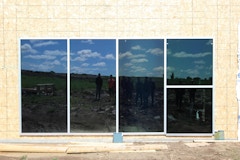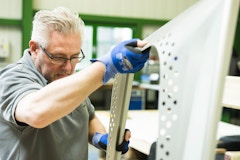
Circadian Daylight Performance of the Electrochromic Glazing
Electrochromic windows introduced to building market as a smart glare control solution to provide visual comfort for building occupant. EC glazing

Electrochromic windows introduced to building market as a smart glare control solution to provide visual comfort for building occupant. EC glazing


Developments in performative computational analysis, mass customization, and complex form manipulation revolutionized building envelope design



High performance can be defined as “a building that integrates and optimizes all major high-performance building attributes, including energy


.FTI's 2019 NYC Forum was an intimate, provocative and forward-looking dialogue with thought leaders from all sectors of the building industry; owners, architects, consultants, contractors and more.




Electrochromic (EC) glass is a seemingly magical solution to a building’s sun shading problems. A technology that was originally developed about

Urban noise pollution is a major environmental health problem. International organizations are making efforts to prevent health damage due to high

Advanced fabrication processes combined with parametric 3D modeling give designers and architects the freedom and versatility to push the boundaries

In order to reduce energy consumption throughout the whole life-cycle of buildings and increase the comfort performance of building sectors, an


The SCALP device is designed to measure the residual compressive surface stress of glass. As the SCALP does not rely on the birefringence properties

The Facade Tectonics Institute's biennial World Congress, hosted October 12-13, 2022 in Los Angeles, gathers the built environment’s most influential players to discuss advancements revolutionizing the design and delivery of the building skin.


New approaches to lightweight metal forming have the potential to advance architectural fabrication, particularly in the design and engineering of